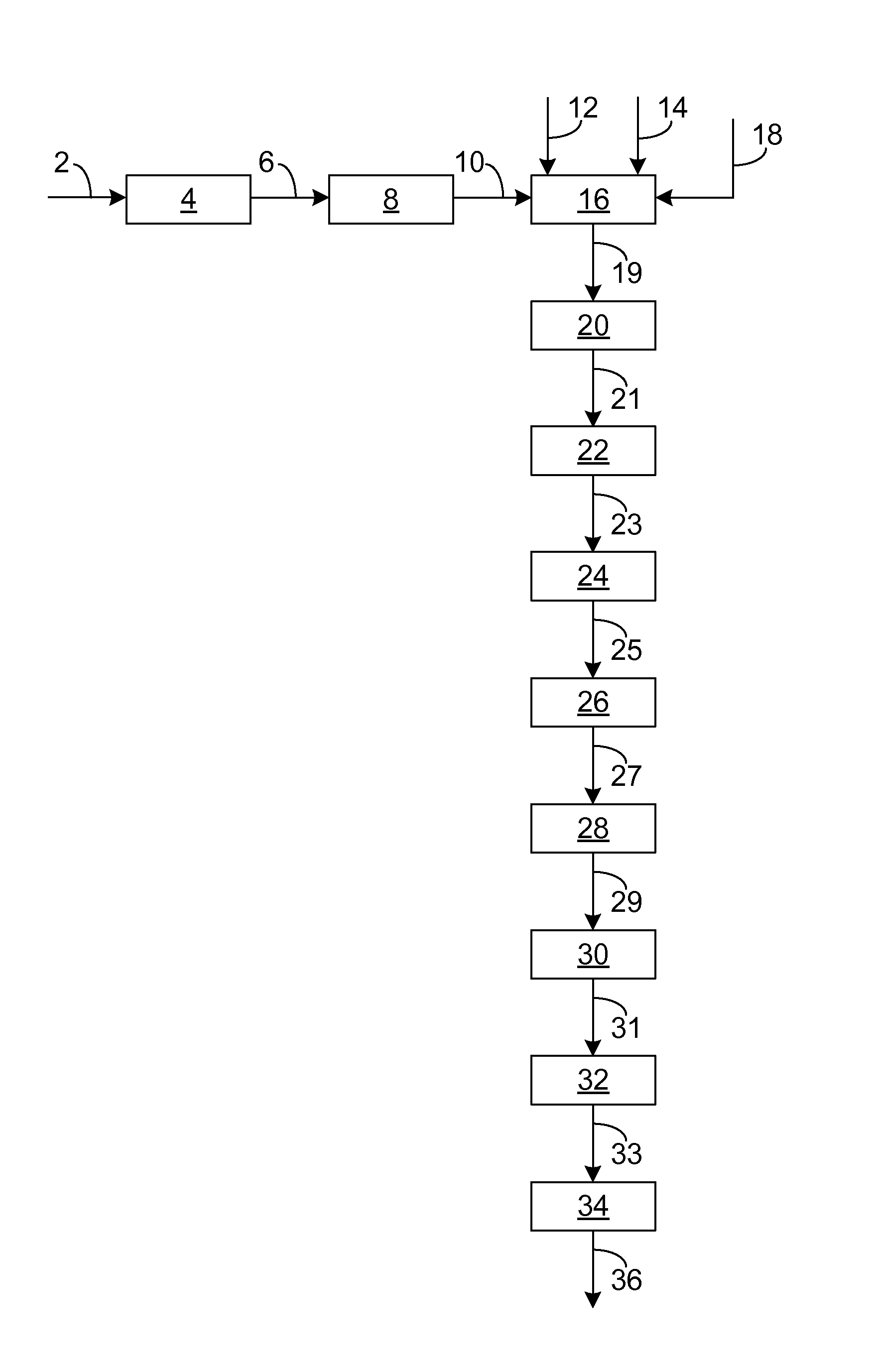Fluid separation assembly to remove condensable contaminants and methane conversion process using a supersonic flow reactor
a technology of supersonic flow reactor and separation assembly, which is applied in the direction of mechanical vibration separation, separation process, carboxylic compound preparation, etc., can solve the problems of increasing the cost of these traditional feeds
- Summary
- Abstract
- Description
- Claims
- Application Information
AI Technical Summary
Benefits of technology
Problems solved by technology
Method used
Image
Examples
Embodiment Construction
[0016]One proposed alternative to the previous methods of producing olefins that has not gained much commercial traction includes passing a hydrocarbon feedstock into a supersonic reactor and accelerating it to supersonic speed to provide kinetic energy that can be transformed into heat to enable an endothermic pyrolysis reaction to occur. Variations of this process are set out in U.S. Pat. No. 4,136,015 and U.S. Pat. No. 4,724,272, and SU 392723A. These processes include combusting a feedstock or carrier fluid in an oxygen-rich environment to increase the temperature of the feed and accelerate the feed to supersonic speeds. A shock wave is created within the reactor to initiate pyrolysis or cracking of the feed.
[0017]More recently, U.S. Pat. No. 5,219,530 and U.S. Pat. No. 5,300,216 have suggested a similar process that utilizes a shock wave reactor to provide kinetic energy for initiating pyrolysis of natural gas to produce acetylene. More particularly, this process includes passi...
PUM
| Property | Measurement | Unit |
|---|---|---|
| temperature | aaaaa | aaaaa |
| mole percentage | aaaaa | aaaaa |
| temperature | aaaaa | aaaaa |
Abstract
Description
Claims
Application Information
 Login to View More
Login to View More - R&D
- Intellectual Property
- Life Sciences
- Materials
- Tech Scout
- Unparalleled Data Quality
- Higher Quality Content
- 60% Fewer Hallucinations
Browse by: Latest US Patents, China's latest patents, Technical Efficacy Thesaurus, Application Domain, Technology Topic, Popular Technical Reports.
© 2025 PatSnap. All rights reserved.Legal|Privacy policy|Modern Slavery Act Transparency Statement|Sitemap|About US| Contact US: help@patsnap.com

